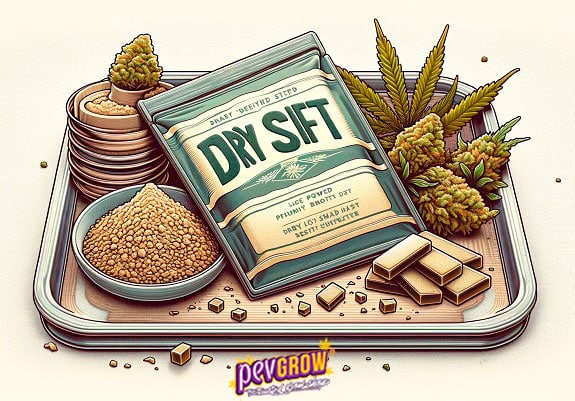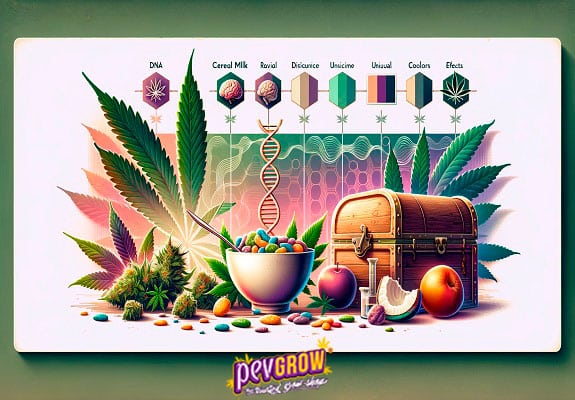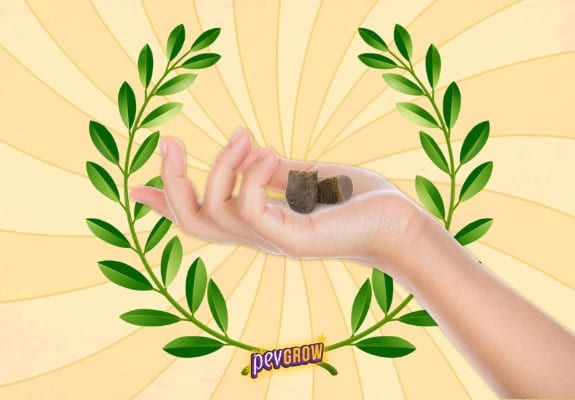

In constant struggle for the regulation of cannabis, mainly in the medicinal field.
23-09-2022 09:00:04 - Updated: 23 September, 2022
In the world there are many different types of hashish, made with different genetics, different techniques, varied colors, textures of all kinds, and above all with different finishes. This is because there are many different ways to do it, although they are all based on separating the trichomes of the cannabis plant and concentrating them. In this article we are going to see all the types of hash on the planet and the characteristics that differentiate it from the others, and I am sure that you will enjoy it a lot, so make yourself comfortable.
🎯 Types of hashish, names of the different techniques
- Dry Hash: Also called Kief, it is a type of dry sifted hash, since it is made by filtering the resin with the help of sieves, rigid screens, or sieves that contain holes of different sizes. The final quality will be determined by the strength of the movement of the plant material and the different refiltrates that serve to eliminate remains and concentrate only the glandular heads of the trichomes.
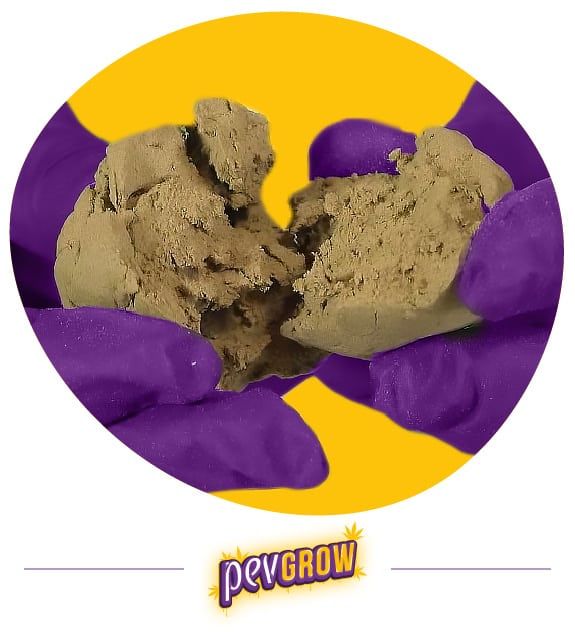
- Charas: Charas is made by rubbing bare hands through the buds of live marijuana plants, with the intention of carefully breaking the outer part of the trichomes and the essential oils they contain to stick to the palms of the hands. Once a good layer of resin has built up, both hands are rubbed together in order to separate pieces of this type of fresh hash.
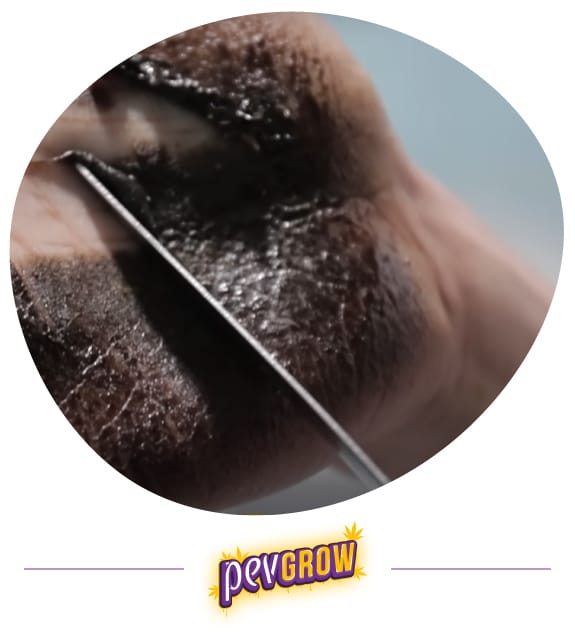
- Ice-O-Lator: Also called Water Hash or Bubble Hash, it is a type of hashish that is based on the separation of trichomes with the help of movement, cold water, ice, and extraction meshes that contain holes of different sizes. This method can be done with freeze-dried vegetable matter, but it can also be done with fresh vegetable matter, although in this case it is called Fresh Frozen.
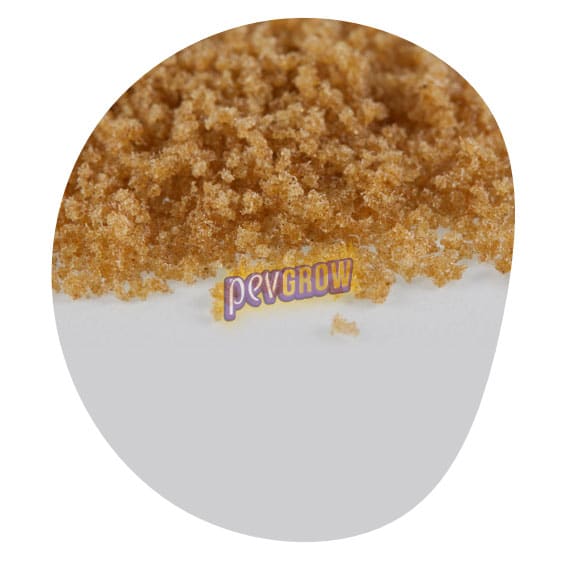
🚀 World hash varieties
- Morocco: It is the largest producer in the world by far, but it is not made in the entire Moroccan territory, since the vast majority is concentrated in the Riff Valley, especially in the mountains of Ketama and Chaouen. As a general rule, Dry Hash is made, although in recent years they have also started to make Ice-O-Lator. In Morocco, so many different types of hashish are manufactured that it deserves its own section, which we will see below.
- Afghanistan: At the time it became the largest producer and exporter of hashish on the planet, and today it is surely the second behind Morocco. In Afghanistan, a very malleable type of black hashish is made, and they use very fine sieves with which they filter and refilter until they get one of the best qualities in the world. Most of the Afghan production is concentrated in the Mazar i Sharif region, in the north of the country.
- India: Some of the tastiest hashish concentrates in history are made in India, and its territory is so large that the aroma, flavor and effect can change a lot, because they also use different genetics. Although it is also made elsewhere, most of India’s hashish is made in the northern valleys of the country, particularly in Malana and Parvatti. Both sifted hashish and charas are made in this country, charas being tastier but sifted more powerful.
- Pakistan: Pakistani hashish is also considered one of the best in the world, and is closely related to the Afghan, basically because most of the production is in the west of the country, right on the border that separates both states. A delicious type of hashish is also made in the Khyber pass, a little lighter in color than the Afghan, and with a flavor that is more reminiscent of the variety of cannabis with which it is made, like that of Cachemira, an area which includes part of Pakistan, India and China where the famous Kashmir is produced.
- Nepal: Until 1973, hashish was completely legal in Nepal, and for this reason it was a must for thousands of hippies in the 1960s and 1970s, since both in the capital Kathmandu and in other cities, there were shops selling They offered it to both tourists and locals. As in North India, Nepal makes sifted hashish and charas, but charas is usually made because the climate is too humid to separate the resin dry. The most famous type of Nepalese hashish is the acclaimed Nepalese Temple Balls, a premium quality charas.
- Lebanon: This small country is one of the largest producers of hashish on the planet, especially in the Bekaa or Bekaa valley region. In Lebanon, sifted hashish of 2 types is usually made, the blond and the famous Lebanese red, which became one of the most famous and demanded in the 1980s. In this country, they usually separate at least 2 qualities of each type, with a method very similar to that used in Morocco, that is, filtering and refiltering with the help of sieves.
- Turkey: During the years of the Ottoman Empire, more quantity was produced than now, but the quality of Turkish hashish today is superior to that of a few years ago. It is mostly produced in the Anatolian region, of the sifted type, and has a very smooth smoke with nuances reminiscent of the processed cannabis strain. Despite using indica genetics, the effect of this hash is much more cerebral and stimulating than Moroccan or Afghan.

⛳ Types of brown hashish, the most common
Many people have asked us what the different colors of hashish are due to, and the factors are multiple, because it depends on the type of genetics used, the maturation of the resin, the technique, the time it has, or the way of preserving it, among others.There are strains like Tropicanna Cookies that produce a reddish hashish, others like Pakistan Chitral Kush that make it purple, but most genetics in the world produce it in a greenish, brown, or even black tone.
There are also varieties such as the Lebanese from the Becá Valley that produces yellow or red hashish depending on the maturation of the plants, with redder being extracted from the more mature ones. Even using the same plants, different types of hashish can come out with different colors, as is the case with Moroccan hashish, which can be lighter without pressing and very dark after working, since the pressing breaks the resin glands that release the oil that contain oxidizes, leaving a very dark tone. Over time, a dark hash becomes lighter and lighter, especially when it is not stored well because it gradually dries out.
✨ The best types of Moroccan hash today
- Double Zero: Double Zero was the highest quality Moroccan hashish until a few years ago, when only landrace plants from this country were grown. The name represents the micronage of the sieve used for filtering, in this case 100 microns, so only very clean glandular heads are collected. Most of this hash ended up in the coffeeshops of the Netherlands with names like King Hassam or Ketama Gold among many others.
- Hardala: Hardala became the highest quality hashish in Morocco a few years ago, when Pakistani and Mexican varieties were grown in the Riff mountains in addition to the Moroccan varieties of a lifetime. These 3 varieties were mixed when processing the plants, and the result was hashish with a very malleable texture, dark color, and much more tasty than the typical Moroccan.
- Blonde: Its color has to do with the presentation, since it is normally offered unpressed or slightly pressed, and thanks to this the resin is better maintained. There is also another kind of hashish or blond pollen of poorer quality, which has acquired this color because it contains a lot of vegetable matter, and it is the one that is most often consumed in the country itself due to its low price compared to the others.
- Ice-O-Lator: Until a few years ago it was unthinkable that Morocco could process hashish with the Ice-O-Lator method, among other things because of the difficulty of finding ice in the producing areas. But about a decade ago they began to grow commercial seeds in this North African country, and from that moment they began to produce both sifted and Ice-O-Lator with these plants, currently being the best hashish in Morocco.
- Beaten hashish: The name has to do with the type of processing, because in Morocco a basin is usually placed to collect the hashish, which is covered with a sieve or sieve on which the dry marijuana is placed, and everything is covered with a plastic so that nothing comes out. Once everything is ready, they take some small sticks that they use as a drumstick as if they were playing the drums. Hitting the grass (beating) releases the resin that passes through the sieve and remains accumulated in the basin. The first quality is usually very good, but from there it decreases and the second or third quality is usually sold as commercial Moroccan hashish.
✅ Difference between hashish and pollen
There are many people who mistakenly call a type of hashish made in Morocco pollen, probably because of its similarity at first glance. It is the so-called blond powdered pollen, that is, without pressing, which has a presence similar to the pollen released by male plants to fertilize females. The difference between this pollen and hashish is basically the presentation, as I was saying before, since the hashish itself changes color and texture as the resin is pressed and oxidized.
On the other hand, when we refer to low-quality hash as pollen, the differences with good hashish are many more, since in addition to the presence, we must also highlight the greater power, aroma and flavor of good hashish with respect to the so-called blond pollen which normally contains much more contaminants.
👌 Conclusion
Today we have seen the different types of hashish that can be found in various places on the planet, and the differences between them. Keep in mind that within the Dry Hash there are different variations, as well as in the Ice-O-Lator technique or in the charas. If you want to see other extraction techniques such as Rosin or BHO, I recommend you take a look at our blog, because we have very complete articles about it.
⭐ Frequent questions
What kind of drug is hashish?
It is considered a soft drug, and is a concentrate of cannabis resin. Hashish is made up of many heads and feet of trichomes, which are the glands that grow in the epidermis of the floral tops and leaves of marijuana, and which contain most of the cannabinoids, terpenes and other aromatic and psychoactive compounds of this plant.
How many different types of hash are there?
This question does not have a precise answer, because it is the same as asking how many different types of wine there are. In general, it could be said that there are 3 different types of hashish, charas, sieved and extracted with ice and water, but these are really methods, and as I told you before, within each technique or method there are many variations.


